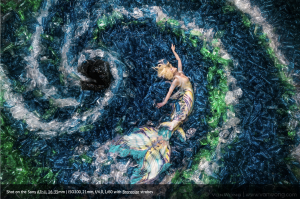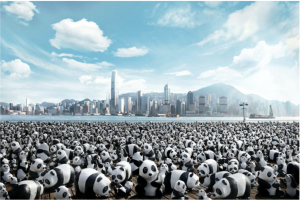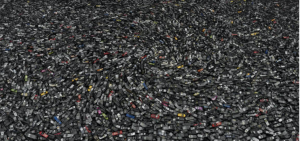Kalin Glesner – Trash to Treasure
Kalin Glesner
Trash: Natural Art, From Trash to Treasure
Preface:
This portfolio will focus on trash; Natural Art: From Trash to Treasure.
Introduction:
The focus of this portfolio is related to how environmental artists are turning trash into art that in some cases is not only being repurposed but also repurchased. For centuries, we have expressed our innermost thoughts through art. From the time man drew with rocks on the cave walls, to modern day when there are various ways of expression. As the twentieth century has crept into view, global concerns have become more prominent. Man has taken Mother Nature for granted and the environment has taken the backlash. Environmental artists are visionary’s and some find ways to take the human relationship with the environment and create ways to make the “ugly” more desirable.
Themes:
This portfolio will include two main themes. The first involves using art to raise awareness of environmental issues and enable a closer understanding of how excessive waste impacts our environment. The second theme is related to taking what was once a part of an environmental problem and using artistic ability to recycle for a new purpose.
Analysis:
The image depicted showcases different environmental issues through an artistic piece.

Von Wong borrowed 10,000 plastic bottles from Tomra, a waste management center to create this piece of art. There was a full day of experimenting different ways of how to represent the bottles from the best artistic point of view. They had come to the conclusion that they would make the bottom look like a beach and lay the bottles to give the illusion of water. What the artist was trying to allude to was the idea that the plastic bottles are harming the sea life. Eight states so far have banned the use of plastic bottles.The artist hopes to spark a change in the people around us.
In the 1960’s and early 1970’s there was an environmental art movement which celebrated how artists were able to connect with their vision and work.

Paulo Grangeon displayed 1,600 paper michaed pandas, which is about the number that is left in the world. He was making an attempt to show the need to protect the endangered species. In Pandas On Tour, Paul Grangeon was trying to make an environmental impact through a work of art. The exhibit launched in 2008, and made it to more than 20 countries.

Chris Jordan captured an image of debris that society leaves behind quantities of cell phones, cars, circuit boards, that are left behind, and just leaving an imprint on our earth. Chris said, “I’m appalled by these scenes, and yet also drawn into them with awe and fascination.” This picture, although at a glance just looks like it could be a swirl of colors, at close glance, is a pile of what we throw out and is creating an imprint on our earth and causing distress on our environment. Recycling is a very important part of the future and what is going to help save the environment.
Application
Artists and activists are allowing our community to see angles that they may not have the opportunity to see outside of they daily lives. When given a new perspective, it allows them to take a step back and find a way to make a difference and think on what they can do. When one person makes a movement in the right direction, it starts a motion. Art is a good way to show environmental issues and perspectives.

